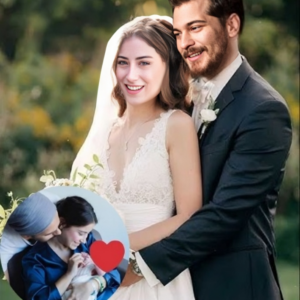BREAKING NEWS| Who Killed Baba Siddique? | Lawrence Bishnoi Vs Salman Angle A Distraction? | Akash Banerjee & Rishi
.
.
.
PLAY VIDEO:
Return of the 90s: Is Mumbai Slipping Back into an Era of Crime and Chaos?
In Bollywood, the 90s are back in vogue, with remixes of old songs and remakes of classic films dominating the industry. However, it seems Mumbai, too, is attempting a troubling return to the 90s—not in entertainment, but in crime. The streets of Mumbai, once cleaned of the underworld filth through immense effort, now seem to echo with the same dangerous tones as they did three decades ago.
The assassination of former minister and prominent Muslim leader, Baba Siddique, last Saturday night brought back haunting memories of the notorious gang wars of the 1990s. Siddique, known for his deep connections in Bollywood and politics, was gunned down in a style reminiscent of the underworld executions that once terrorized the city.
Despite the crime branch arresting the shooters, the key question remains: who orchestrated this high-profile killing, and why? Rumors swirl around Lawrence Bishnoi, the infamous gangster who operates an international crime syndicate from within the confines of prison, utilizing technology like VoIP to maintain his empire. Bishnoi has been linked to Bollywood before, particularly due to his public threats against superstar Salman Khan, all stemming from the 1998 black buck poaching case.
While some are quick to frame Bishnoi’s involvement in Siddique’s murder as part of a vendetta against Salman Khan’s allies, there’s a more practical, though less glamorous, angle. Siddique’s influence extended beyond Bollywood into the lucrative real estate sector of Bandra West. His alleged involvement in shady builder deals, including a scam exceeding 2000 crores related to slum rehabilitation projects, may have made him dangerous enemies.
This is not the first time a prominent figure has been eliminated in Mumbai due to business disputes. The death of Siddique, a politician with ties to Bollywood’s elite, raises concerns that gangsters may once again be seeking to take control of Mumbai’s underworld, as they did in the 90s when politicians, business tycoons, and celebrities all lived in fear of extortion and murder.
But why now? Unemployment and the lure of easy money continue to fuel the rise of gangs like Bishnoi’s. Reports suggest his gang controls over 700 shooters and operates with impunity across India. Despite being incarcerated for a decade, Bishnoi continues to expand his influence. It’s a sobering reminder that underworld activity never truly disappears; it merely lies dormant, waiting for the right conditions to resurface.
Siddique’s assassination sends a chilling message—organized crime is making a comeback in Mumbai, and if not curbed, the city may once again become a battleground for gang warfare. The government must act quickly to prevent history from repeating itself. If this new wave of crime is allowed to flourish, the consequences could be dire. In a city where a politician can be killed for as little as Rs. 50,000, the implications for Mumbai’s future are bleak.
As the investigation continues, questions remain about the government’s role in controlling Bishnoi’s activities from jail. Is Bishnoi receiving special privileges? Why has he been allowed to communicate with his gang from behind bars for so long? The answers to these questions will determine whether Mumbai remains open for business or descends into another era of fear and violence.
The stakes couldn’t be higher. The city that fought so hard to rid itself of underworld influence may find itself once again at the mercy of crime lords, with Lawrence Bishnoi at the helm of a new criminal empire.
News
Can Yaman şunları söyledi: “Demet hakkında son kez konuşuyorum.”
Can Yaman, Demet Özdemir Hakkında Son Defa Konuştu: İşte Detaylar Türk magazin dünyasında uzun süre gündemden düşmeyen Can Yaman ve Demet Özdemir ikilisi, özellikle “Erkenci Kuş” dizisinin ardından sürekli olarak medyanın ilgi odağı olmuştur. Bu ilişki hakkında yıllardır birçok spekülasyon…
Çağatay Ulusoy gözyaşlarıyla güzel haberi duyurdu: İşte tüm detaylar!
Çağatay Ulusoy Gözyaşlarıyla Hoş Haberi Duyurdu: İşte Tüm Detaylar! Türk televizyon dünyasının en sevilen isimlerinden Çağatay Ulusoy, son zamanlarda yaşadığı kişisel ve kariyer zorluklarının ardından, büyük bir müjdeyi gözyaşlarıyla duyurdu. Uzun bir süredir gündemden uzak kalan ve sosyal medyada sessiz…
Engin Akyürek’i evlilik düşüncesine sevk eden kadın ortaya çıktı!
Engin Akyürek, son yıllarda Türk televizyon dünyasının en çok konuşulan ve sevilen oyuncularından biri haline geldi. Özellikle Fatmagül’ün Suçu Ne?, Kara Para Aşk ve Sefirin Kızı gibi projelerdeki performansıyla büyük beğeni topladı. Ancak son dönemde, kişisel hayatıyla ilgili haberler de…
Hazal Kaya’dan Çağatay Hazal Kaya’nın Yönetmeni Simililerle Yanıt Veriyor!
Hazal Kaya ve Çağatay Ulusoý Arasındaki Yeni Tartışmalar ve Sosyal Medyada Gündem Türk televizyon dünyasında yeni gelişmeler dikkat çekiyor. Hazal Kaya ve Çağatay Ulusoý, Adını Feriha Koydum dizisinde birlikte yer aldıktan sonra hala gündemde olmaya devam ediyorlar. İki ünlü isim…
Demet’in Özge’ye sert yanıtı: Bana söylediğin sözlerin gerçek sebebini biliyorum!
Demet Özdemir ve Özge Gürel Arasındaki Gerilim: “Gerçek Sebebini Çok İyi Biliyorum” Sevgili takipçiler, kanalımıza hoş geldiniz. Videomuzu beğenmeyi ve abone olmayı unutmayın. Magazin dünyasında gerginlik her geçen gün artıyor. Bu kez, Demet Özdemir ile Özge Gürel arasında yaşanan gerginlik…
Can Yaman’ın ailesi, neden Demet’i sevmediklerini açıkladı!
Can Yaman ve Demet Özdemir: Ayrılık ve Sürekli Tartışmalar Son yılların en çok konuşulan çiftlerinden biri olan Can Yaman ve Demet Özdemir’in hikayesi, sadece romantik ilişkiler için değil, aynı zamanda halk arasında hala etkisini sürdürüyor. Çiftin ayrılmasının ardından hayranları, sürekli…
End of content
No more pages to load











